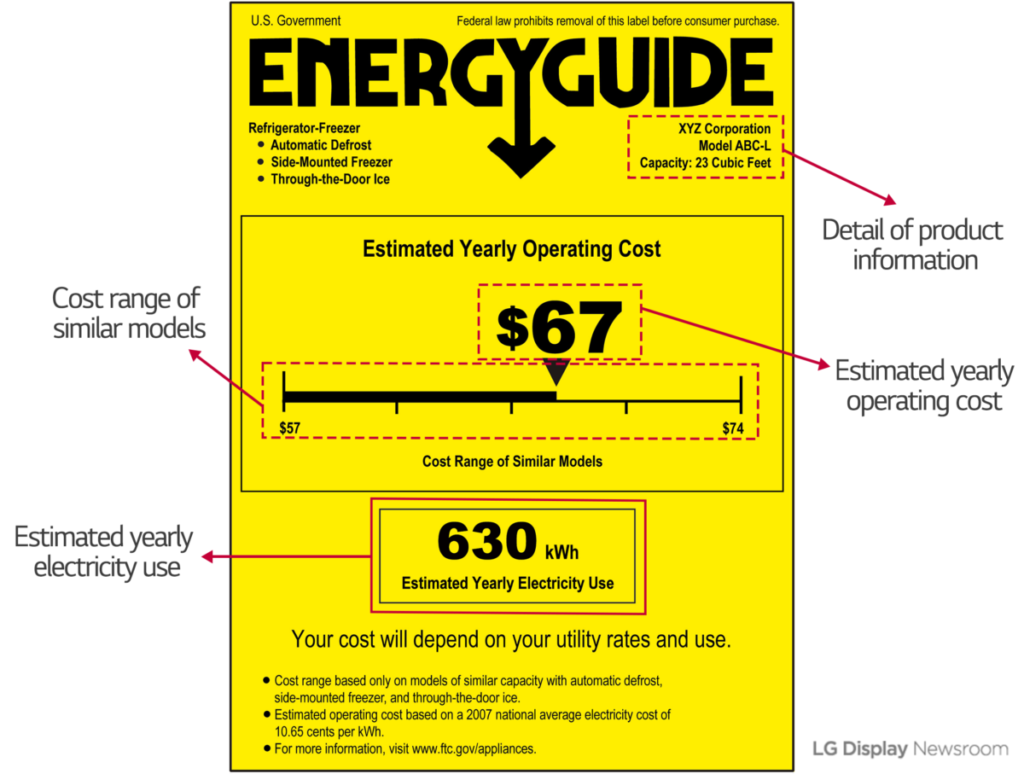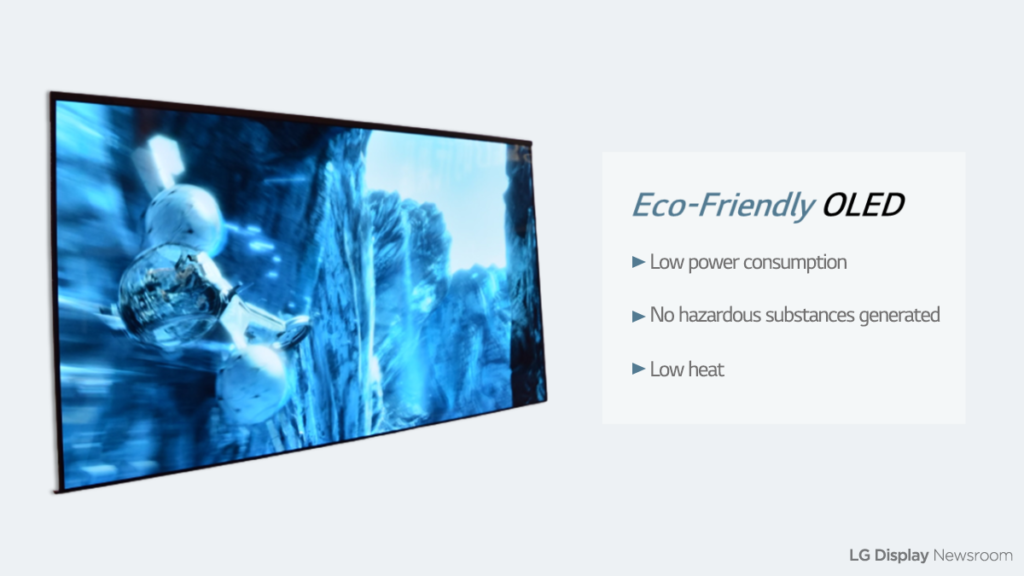DISPLAY 101
#13 Power Consumption

| Power Consumption: Amount of electricity required for an appliance to function |
Have you ever seen the energy consumption efficiency rating on the side or back of electronic devices such as TVs, refrigerators, and air conditioners? This label is to help consumers easily recognize and purchase energy-saving products. If you look at the “estimated yearly operating cost” on it, you can predict how much power will be consumed when using the product for a year. The display also shows the estimated yearly electricity usage, which means consumers can save money and help protect the planet. Power consumption used to be more of a concern, but now low power consumption devices have become a trend. LG Display has also developed technologies with reduced power consumption, like OLED itself.
In the past, plasma display panels (PDPs) and LCDs competed for a leading position in the market. PDPs, which had advantages in size, resolution, and afterimage, had just one disadvantage compared to LCDs: they consumed about 30% to 40% more power. Every time they watched a PDP TV, consumers had to worry more about electricity bills, so they eventually turned to LCDs.
These days, it can be said that raising awareness of power consumption has definitely been effective. Power consumption is less of an issue with displays, as it is a constantly evolving aspect of technological progress.
OLEDs: Lower power consumption, higher eco-friendliness!

The best example of this technological evolution is, naturally, OLED. They are more efficient at power consumption because they do not suffer from the structural problems of having a backlight that is always on. In LCD panels, a backlight unit has to constantly shine, but most of its light is blocked and therefore most of its energy is wasted. OLEDs do not have that problem.
Not only is less power needed, but OLEDs also emit less hazardous substances in the home. LCD panels emit more volatile organic compounds (VOCs) into the air over time, which can negatively affect indoor air quality. OLED TVs, with fewer plastic components due to being a simpler design that doesn’t require a backlight, also emit about 50% less VOCs.
So OLEDs not only have greater performance, but are better for the environment. No wonder they have earned the display industry crown!









